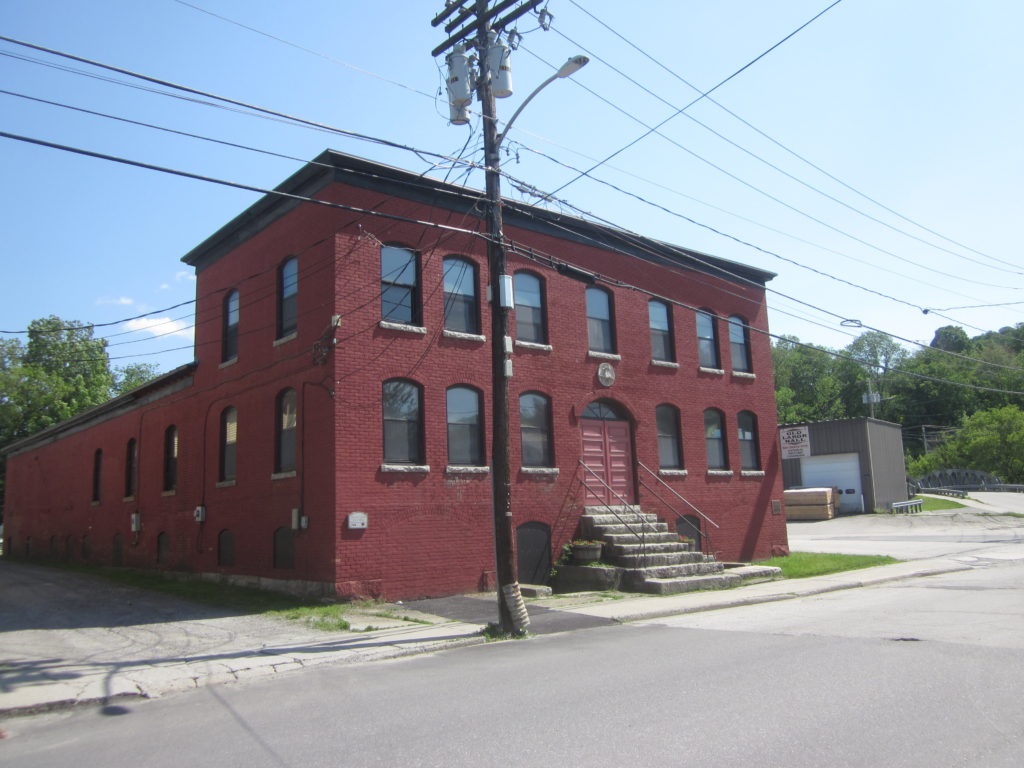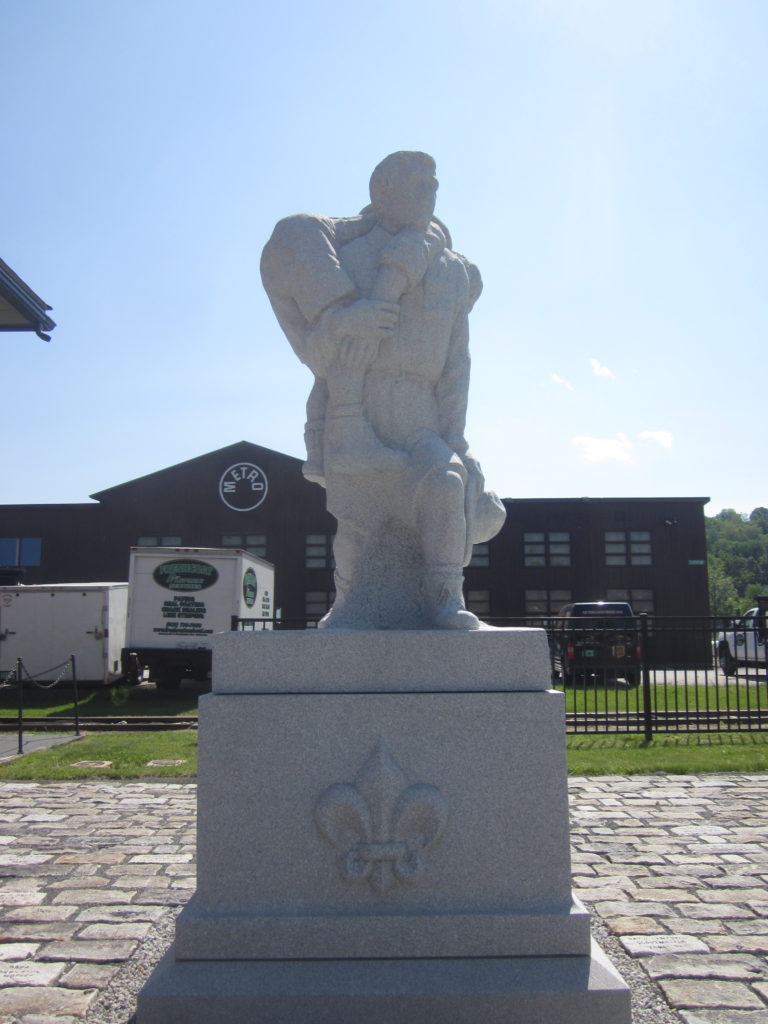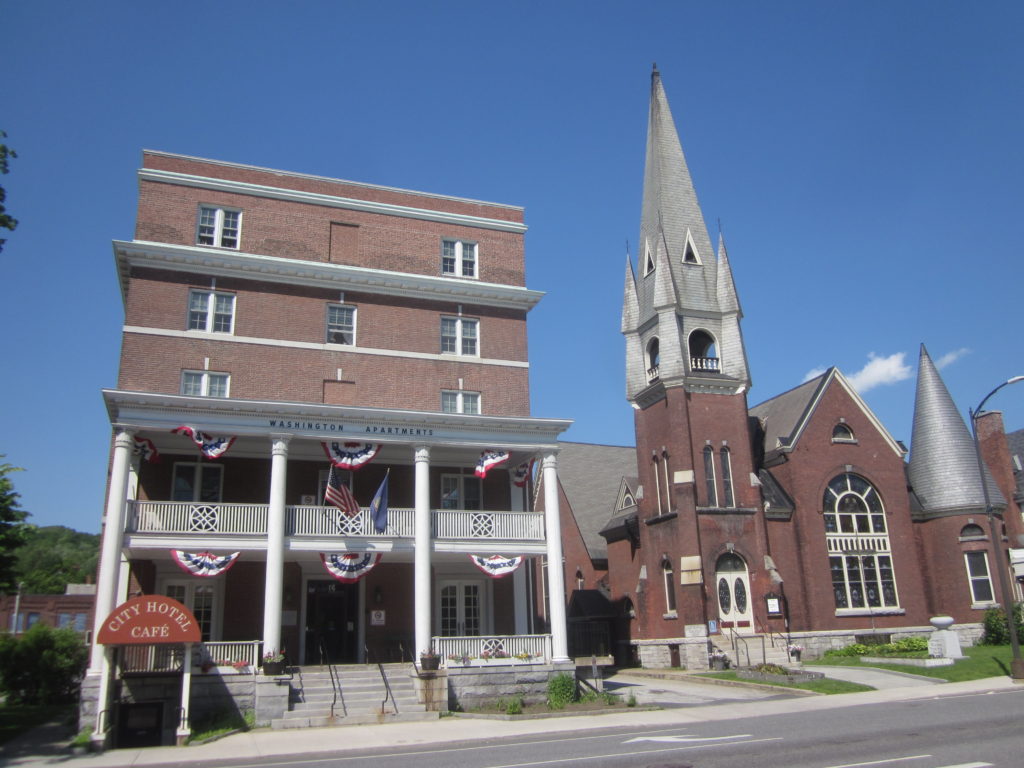Barre, Vermont, has several claims to fame, most recently as the home of the nation’s fastest governor. It is also where the late Franco-American folklorist Martha Pellerin grew up.
In fact, Pellerin’s life and work help to shed light on Barre’s Franco-American past, which is inextricably tied to the area’s most important export—world-famous Barre granite.
In the early twentieth century, the growth of the stone cutting and carving industry made a veritable boomtown of Barre. Quarries and “sheds” (workshops) drew experienced stone workers from Scotland, Italy, and Spain. By then French Canadians had secured their place as Vermont’s largest ethnic group, with a presence in most parts of the state. Many migrants from Quebec farmed in Burlington’s broad, rural periphery. Winooski’s textile industry drew hundreds of families. French-speaking clusters formed successively in St. Albans, Rutland, and St. Johnsbury. The Canadiens also found their way to Barre.
Barre was unique for its blend of nationalities, in the heart of Vermont, as well as its radical left politics. French Canadians fit uneasily in both. As one ethnic group among many, they might have formed a close alliance with European immigrants and offered a common front to Yankee nativism. The politics of labor got in the way.

As in Rutland and Fall River, Massachusetts, French Canadians were a conservative element in the labor landscape of Barre—especially in contrast to their Italian anarchist and socialist neighbors. On the other hand, there is reason to question their resistance to unions.
For a full generation leading up to the Second World War, labor activism regularly translated into strikes in the granite industry. Although the 1920s are often depicted as a period of lethargy and quiescent consumerism, agitation for higher wages and better working conditions—undaunted by the slurs and reversals of 1919—continued. So it was in Barre, where a major strike erupted in 1922 to challenge companies’ open-shop campaign.
Quarry and shed owners wasted little time in “importing” strikebreakers who might crush the movement. At this point, scholars face contradictory information concerning Barre Franco-Americans’ role. Oral interviews from the late 1930s and early 1940s suggest that Quebeckers arrived by the trainload and were marched down Main Street by employers in a show of force. In no time, the strike came to an end in a resounding victory for business. But evidence directly from the year of the strike points to a much more complicated story—a drawn-out strike, intense solidarity on the picket lines, and comically desperate attempts by employers to lure additional workers from Quebec. Bosses did not charter train cars, but lured men in Newport bars and personally ferried them to the quarries in taxis.

How are we to square imperfect personal memory with incomplete records from the period? This requires the kind of triangulation that keeps historians up at night (alongside book reviews, student e-mails, and peptic ulcers). But it just so happens that memory is generally impressionistic, whereas official records are often detail-oriented, at the expense of popular sentiment and ambience. These sources easily complement one another. We can mine both types of evidence for clues and silences that ultimately shed light on the inadequacies of existing narratives.
French Canadians as strikebreakers? This portrayal may owe more to the larger circumstances of 1920s Vermont than to their actual role in Barre labor—especially if we consider those Canadian families that were well-established in the area in years prior to the strike. For that story, and a sense of interethnic conflict in the 1920s and 1930s, I invite you to read my forthcoming article (“An All-American Town?”) in Vermont History, slated for 2020.

The significance of this story is twofold. As noted above, greater study of the clash in Barre can provide a more honest depiction of labor mobilization in the 1920s. Further, as I write in my article, “[s]urveys of Franco-American history tend, in fact, to neglect Vermont altogether, as with northern New Hampshire and rural Maine. Fall River, Lowell, Manchester, and Lewiston have overshadowed smaller centers of industry or resource extraction.” More attention to the likes of Barre may offer a more comprehensive image of Franco-American life in the Northeast.
More voices, better history—and a history that promises to speak to our present-day concerns. Stay tuned for more details.
Leave a Reply